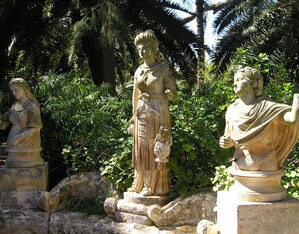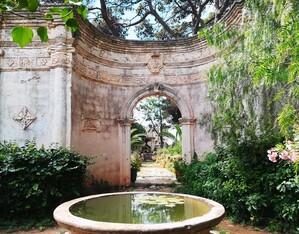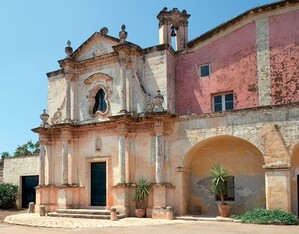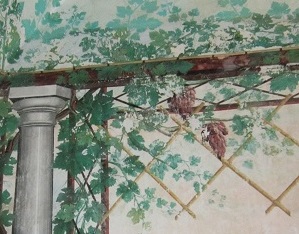Around Nardò, an area known for its baroque, eclectic villas, a farm estate combines agricultural output with a delightful and unusual garden of statues.
The garden’s place name most likely derives from a shrub once used to brush horses; in Salento dialect, brusca means “grooming brush”. The farm buildings cluster around a 16th-century tower that, in the early 18th century, the Dell’Abbate family expanded, adding a Baroque-style facies, a chapel accessible from the residence, and gateways to access the garden’s various “themed” enclosures on either side of the 18th-century chapel: an orchard, almond grove with a dovecote tower, a “Garden of Statues” and a “Bee Garden”. Accessed through an elegant concave gateway, art and vegetation combine in perfect synthesis in the “Garden of Statues”. Where the avenues intersect around a well, interspersed with stone seating, twelve statues and busts are arranged in a quarter circle in groups of three: a statue of America between busts of Vertumnus and Pomona, Africa between Diana and Silvanus, Asia between Ceres and Bacchus, and Europa between Flora and Faun. Carpets of acanthus and periwinkle characterize this enclosed space; blue plumbago blooms provide a mellowing influence; and euphorbias, yuccas, and phoenixes lend an exotic touch. The Zuccaro family redesigned the garden at the beginning of the twentieth century; at the time, the fruit trees from the 18th-century layout were replaced by an ornamental botanical repertoire.





